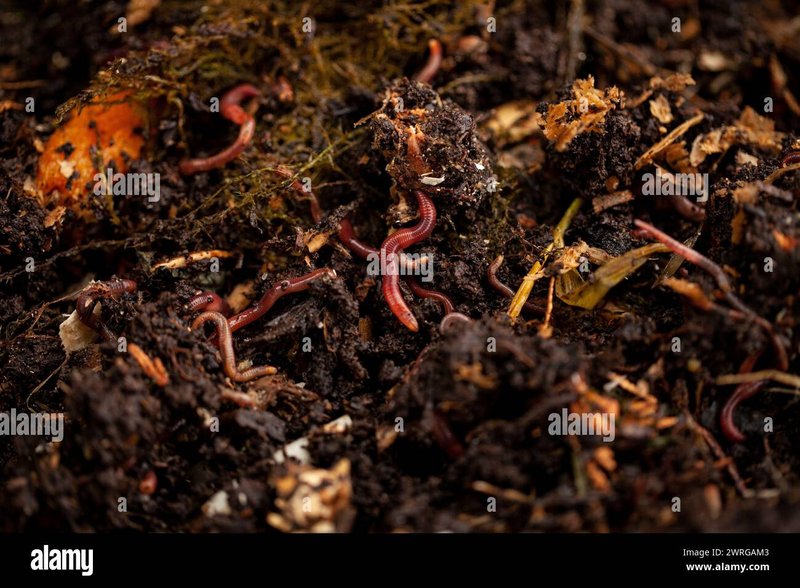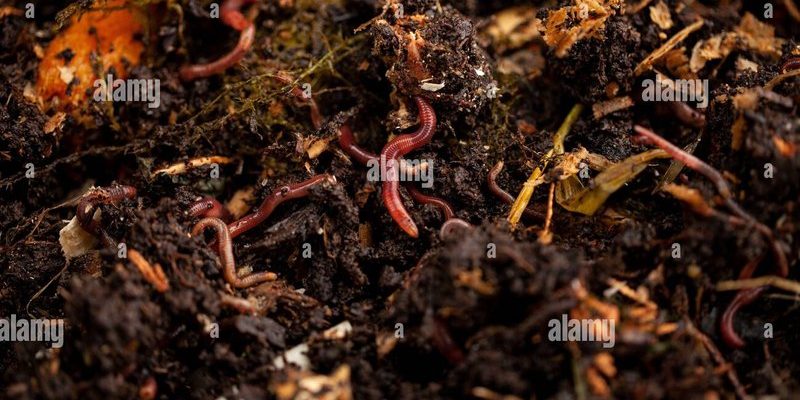
Honestly, it’s pretty fascinating how these squiggly creatures, often overlooked, play a vital role in our environment. Just like how we depend on our gadgets and tools to make our lives easier—think remotes for your TV or that trusty phone charger—earthworms have a unique way of breaking down organic waste, which helps plants get the nutrients they need. Let’s dig deeper into how these little guys do their thing!
The Role of Earthworms in the Ecosystem
Earthworms are more than just a worm that gets you messy hands in the garden. They are a crucial part of the ecosystem. You might be wondering why they matter so much. Well, they help in nutrient cycling, which means they take what’s dead and decaying and turn it into food for living plants.
When earthworms eat organic material, like dead leaves or decomposing fruits, they guide it through their digestive system, which works like a factory. As they digest, they break down complex organic fibers, turning them into simpler components that plants can absorb more easily. It’s kind of like how we break down food for energy; nature has its own way of processing too!
Moreover, earthworms help aerate the soil. As they burrow through the ground, they create tunnels that allow air and water to flow more freely. This not only helps plants grow better but also supports beneficial microbes that further enrich the soil. Without earthworms, the soil would be much denser and less capable of supporting plant life.
How Earthworms Digest Organic Material
So, how do earthworms actually break down organic material? Here’s where it gets interesting. When an earthworm munches on decaying matter, it first enters their mouth, which is equipped with tiny bristles called **setae**. These help to grip and pull the food in easily.
After the food is ingested, it travels to the worm’s **gizzard**, a muscular part of their digestive system that acts like a grinding mill. This is where the food is further crushed and mixed with soil, making it easier for the worm to extract nutrients. After this grinding process, the material moves into the **intestine**, where digestion and absorption of nutrients occur.
The end result is what we lovingly call **vermicompost**. This nutrient-rich mixture comes out the back end of the worm—often referred to as worm castings—and is one of the best fertilizers a gardener can ask for. It’s packed with essential nutrients that promote plant growth and health. Just like how a good battery boosts your remote to work effectively, worm castings give plants the energy they need to thrive.
The Process of Composting: Nature’s Recycling
Composting is a natural process that earthworms contribute to in a big way. Think of it this way: when you throw vegetable peels or yard waste into a compost bin, you’re basically creating a buffet for earthworms. They love feasting on that organic debris!
As they consume these materials, earthworms help accelerate the decomposition process. They do this by breaking down large pieces of organic waste into smaller bits, making it easier for other microorganisms—like bacteria and fungi—to do their job. This teamwork creates a cycle where waste transforms into nutrient-rich soil, which in turn supports healthier plants.
Composting with earthworms is not only efficient but also easy. If you’ve ever tried traditional composting, you know it can take time and effort. But with earthworms, the process speeds up, producing rich compost more quickly. Plus, it’s a lovely way to reduce waste while benefiting your garden—a win-win!
Types of Earthworms and Their Different Roles
Not all earthworms are the same, and that’s an important point to understand. There are over 4,000 species of earthworms worldwide, but they can generally be categorized into three main types based on their roles: *epigeic*, *endogeic*, and *anecic*.
– **Epigeic Earthworms**: These worms live near the surface and feed on decomposing organic material. They’re the ones you’ll often see in your compost pile.
– **Endogeic Earthworms**: This type burrows through the soil and feeds on the organic matter found within the soil. They help mix soil layers and improve soil structure.
– **Anecic Earthworms**: Known for their deep burrows, these worms create channels that allow air and water to infiltrate deeply into the soil. They contribute significantly to soil aeration and drainage.
Each type plays a unique role in the composting process and supports the ecosystem differently. So when you’re looking to improve your garden, consider the kinds of earthworms you might want to encourage—they can make a big difference!
The Benefits of Earthworm Activity for Plant Growth
Here’s the thing: the activity of earthworms can lead to remarkable benefits for plants. Their work in breaking down organic material and creating worm castings leads to healthier soil, which is fundamental for plant growth.
Worm castings are rich in essential nutrients like nitrogen, phosphorus, and potassium—all critical for plant health. When these castings mix into the soil, they help improve its structure, allowing roots to grow more easily and access nutrients better. It’s almost like giving a plant a hearty meal!
In addition to nutrients, worm castings also enhance microbial activity in the soil. Healthy microbes play a key role in decomposing organic material and can help fend off diseases, creating a balanced ecosystem in your garden. With earthworms doing their job, your plants are more likely to flourish, making your garden a vibrant space.
How to Encourage Earthworms in Your Garden
If you’re excited about all the benefits earthworms bring, you might be wondering how to encourage them in your garden. Here are some easy tips to create a worm-friendly environment:
- Add organic matter: Regularly add kitchen scraps, coffee grounds, or yard waste to your garden. This gives earthworms plenty to munch on!
- Avoid chemical fertilizers: These can harm earthworm populations. Opt for natural fertilizers that support their health instead.
- Keep the soil moist: Earthworms need moisture to thrive, so water your garden regularly, especially in dry spells.
- Create mulch layers: A layer of mulch not only retains moisture but also provides additional organic material for earthworms to eat.
By following these simple steps, you can help create a thriving ecosystem right in your backyard. Plus, you’ll get to watch your plants grow even healthier because of your little worm buddies!
In conclusion, earthworms play a vital role in breaking down organic material and enriching our soil. They help recycle nutrients, making them essential for a thriving garden and a healthy ecosystem. Knowing how these little creatures work, you can see why it’s so important to appreciate and protect them.
So the next time you dig in your garden and feel the earth beneath your fingers, remember those squiggly worms doing their part. They’re working hard to transform waste into life-giving nutrients. Just like you wouldn’t overlook your remote control’s importance in watching your favorite show, don’t overlook the incredible contributions earthworms make to our environment. Embrace the earthworm magic, and your garden will thank you!

